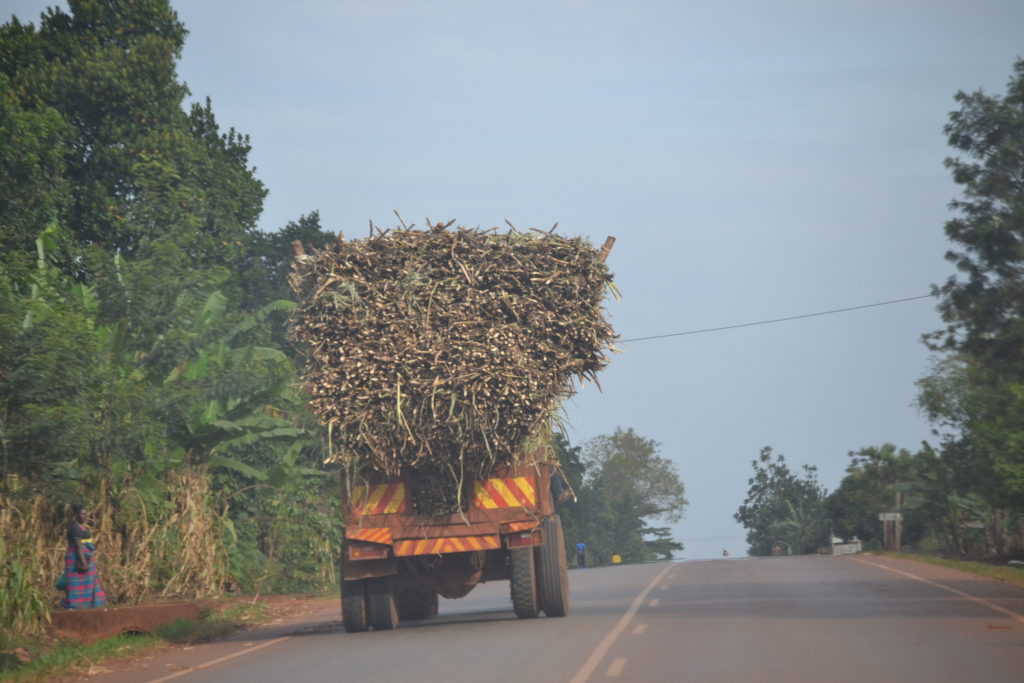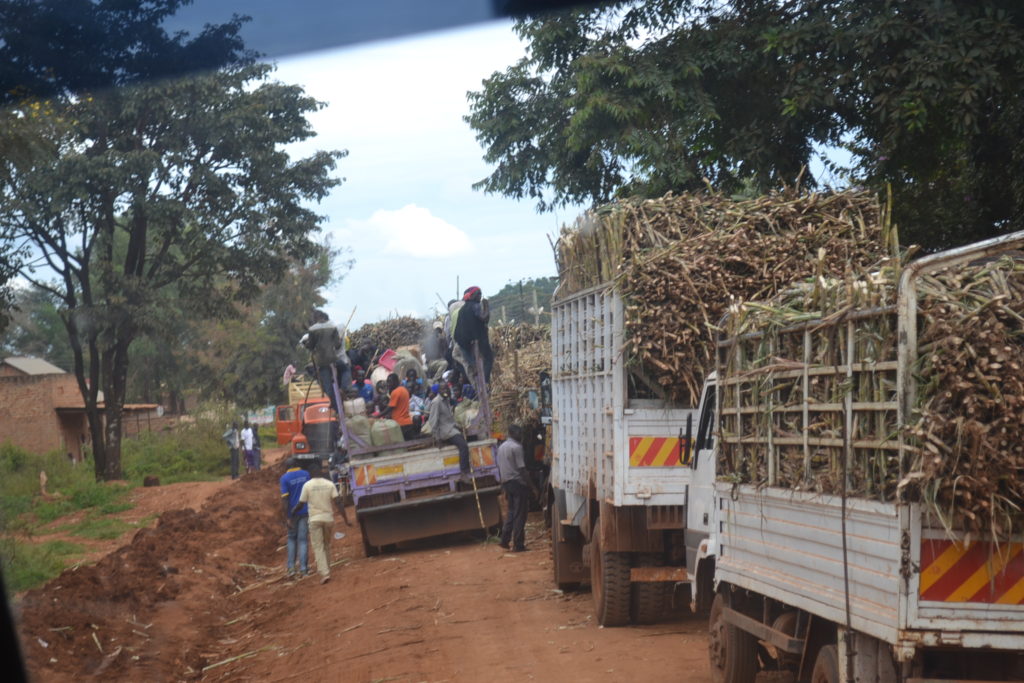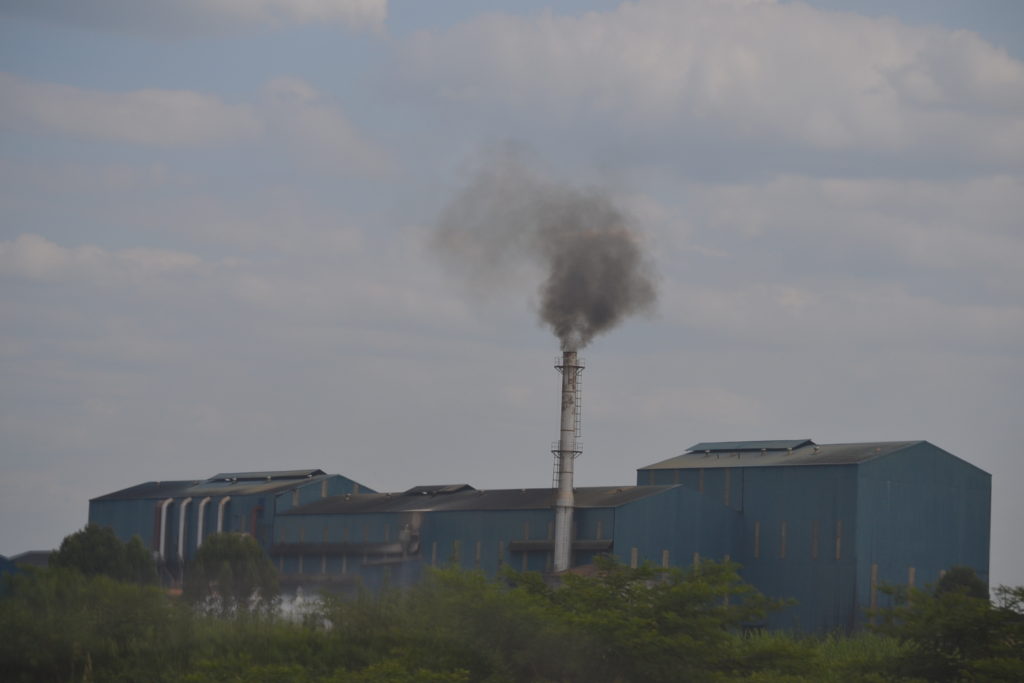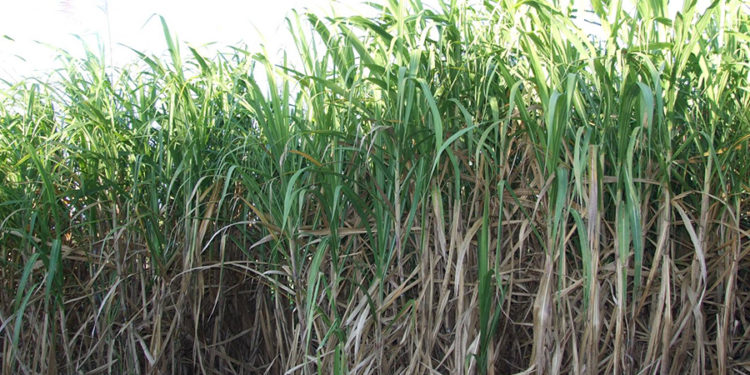He is seated is on the rear veranda of his house in Namasiga village. His chin firmly in the broken cups of his palms.
“Koodi Ssebo!” I call out, but Musa Musika, (not his real name) does not respond.
The gaze remains fixed on the vast sugarcane plantation sprawling up to the valley over which his home hovers, enabling him watch over it during the day.
The deep lines running across his forehead and the unflinching stare tell it all – he is lost in his thoughts.
“Oba mbiteme?” (Or should I simply cut them down?), he mutters to himself before he takes note of our presence.
“My children, forgive me. I had not realised you had come,” Musika says when he finally awakes from his reverie.
Trouble amid Covid-19
Mr Musika is disturbed that he has failed to raise enough money to send two of his children back to school (one in Senior 4 and the other in Senior 6).
Late in September, the government announced that schools could reopen starting with students and pupils in candidate classes – Primary Seven, Senior Four, Senior Six – and finalists in universities and tertiary institutions. The would be on the condition that they follow the set standard operating procedures (SOPs) that were recommended by the World Health Organisation (WHO) as part of the measures to contain the spread of the covid-19 pandemic.
The schools reopened on October 15th , seven months after they closed on March 20th as part of the government’s attempt to prevent the spread of the coronavirus. It has now been more than two weeks since the schools reopened and Mr Mukisa still has not been able to get his hands on the money.
“I have not been able to sell any cane. Getting a permit (to supply sugarcane to the factory) has not been possible so I cannot raise money for registration fees, school fees and their upkeep. I am afraid they will have to miss the final examinations,” Mr Musika said.

Troubled industry
Mr Musika, like many other sugarcane farmers in Busoga, could be a rich man. With hundreds of acres of sugarcane, they can quickly turn into some of the richest men in their hoods if only they could convert the cane into cash. As of now though, they are simply “nearly rich men” because they cannot exchange the crop for cash.
That rather frustrating situation is the product of a series of developments that have occurred in the local sugar industry since November 2nd, 2005, when Mayuge Sugar Industries’ (MSI) was allowed to set up and run a sugar mill in Mayuge despite protests from Kakira Sugar, one of the leading sugar manufacturers in Uganda.
Kakira Sugar was concerned that MSI did not have a nucleus estate to match its own crushing capacity and that it was setting up camp near its own mills in breach of a stakeholders’ policy of exclusive zoning, which prohibits other companies from opening up mills within a 20 kilometre radius of an existing mill.
A year or so before, another competitor, GM Sugar, had opened its mill in Bulumagi along the Jinja-Kampala highway. The opening created problems as some of the farmers who had been contracted by both Kakira Sugar and the Sugar Corporation of Uganda Ltd (SCOUL) started reneging on their contractual obligations to supply the two companies with cane, even when they had been provided with items such as tractors to plow and harrow the fields, seeds for the cane and agricultural inputs like fertilizers
Kakira Sugar was concerned that the entry of Mayuge Sugar Industries (MSI) would exacerbate the poaching of sugarcane from more of their contracted farmers, which would in the long run plunge the sugar industry into further conflict and turmoil.
Mr Mwine Jim Kabeho, the Chairman of the Uganda Sugar Manufacturers’ Association (USMA), which brings together the three biggest sugar producers – Kakira Sugar, Kinyara Sugar and the SCOUL – said Kakira’s concerns were ignored.
“We felt that it was necessary for the new factories to be properly located in their own zones where they could develop their own cane, but some people within the circles of government felt that establishing more sugar factories in close proximity to each other within one zone will not lead to increased sugar production and enable farmers get better prices for their crop,” Mr Kabeho says.

Laughing to the bank
Dr David Babi Kamusaala, who teaches Psychology at Mbarara University of Science and Technology, is also a cane farmer in Busoga. He says that the opening of GM sugar and Mayuge Sugar, coupled with a drought that started around 2014, led to a hike in the price for sugarcane.
“The situation led to a high demand for sugarcane and inevitably a hike in the price from Shs73,000 per a ton to an unprecedented Shs187,000 per a ton. Which sugarcane farmer would not celebrate that?” Dr Kamusaala asks.
Malnutrition bites
The high price served as an incentive for households to substitute food crops for sugarcane, placing the region at the risk of food insecurity and household poverty. This would exacerbate associated outcomes such as malnutrition among both children and adults in a region that had already tasted the scourge of hunger.
Between 2011 and 2012 malnutrition had left at least 20 children in Namutumba dead and hundreds more affected.
The situation deteriorated so much in the years that followed that the World Health Organisation (WHO) was forced to launch early in 2016 a programme to eliminate malnutrition among children below the age of five in the Busoga region.
Besides providing nutritious foods for children from affected families, WHO also provided 4,678 expectant mothers in the districts of Iganga, Namutumba, Mayuge and Luuka nutrition boosters and treated mosquito nets to avoid contracting malaria.
The situation has not changed much. The 2016 Demographic Health Survey indicates that up to 50 percent of the children admitted in Busoga’s hospitals are severely malnourished.
Figures from the Ministry of Health suggest that 53 percent of the children in Busoga are anaemic and that a majority of them are born weighing less than 2.5kgs.
Mr Kamlesh Madhvani, the Joint Managing Director of Kakira Sugar, who encouraged farmers to go into sugarcane growing suggests that the situation was caused by the arrival of the smaller mills.
“The agreement between the farmers and Kakira clearly stipulated that 30% of the farmers’ area should be reserved for cash crops. This was discarded when new millers, who had not invested any substantial amounts in developing their own nucleus estates, entered Kakira’s neighbourhood, and encouraged farmers developed by Kakira, to supply them with the cane,” Mr Madhvani argues.
Bubble bursts
The banks moved to grab a piece of the pie. Stanbic Bank and Tropical Bank opened up branches in Kakira to get in on the action. Tropical Bank moved a step further by introducing an agricultural loan scheme through which farmers could access loans to either acquire assets or finance the expansion of their farms.
Now whenever a commodity fetches profits of unprecedented margins, the phrase, “bifuna kiralu” (it fetches crazy money) is used. It therefore followed that the statement, “ebikaadho bifuna kiralu” (Sugarcane fetches crazy money) became quite commonplace here in the years between 2014 and 2016.
Those, who had until then not been interested in sugarcane growing, moved in, especially towards the tail end of the 2016. Many without even registering with Kakira Sugar as they sought to have a share of the sweet cash.
Sugarcane usually takes between 16 and 18 months to mature. By the beginning of the 2018 Busoga had so much cane that all the mills in the region could not gobble it up.
Flooding of the market caused a crash in the price from Shs180,000 to Shs120,000, before it dropped to Shs110,000 in July last year.
In the middle of July this year prices once again fell from 110,000 to Shs104,000, but the price was to drop to Shs96,000 at which it is selling now.
Even at that low price, the millers are still incapable of consuming the cane, partly because of limited production capacity.
Kakira Sugar has a crushing capacity of 7,500 metric tons of cane per day, Mayuge Sugar 2,000 tons per day, GM Sugar 1,650 tons of cane per day, Kaliro 1,650 tons per day and Kamuli Sugar 1.450 tons per day, which is simply not good enough to process all the available cane

Enter the exploiters
When Kakira Sugar first started encouraging farmers to grow sugarcane, it set up an elaborate system through which its field assistants would register sugarcane farmers, taking note of the acreage and maturity at the time of registration. The data would then be entered into the system to enable the firm to keep track of the canes’ growth.
“Once the system showed that the cane was at least 18 months a farmer would be simply called to pick his cane permit. There was never a need for a farmer to go to the factory to beg and negotiate for one,” Mr Ibrahim Ikaata says.
GM Sugar and Mayuge Sugar did not have such an elaborate system. They were always eager to give permits to whoever showed up at the mills with cane, but obtaining a permit to supply has suddenly become akin to the Biblical passing of the camel through the eye of the needle.
So what happened to make the acquisition of a permit so difficult?
“My shambas (sugarcane plantations) are not registered yet (with Kakira Sugar) and I can still process permits in Mayuge Sugar Industries even when not registered, but this was not an issue until the big people came into this business,” one of the farmers wrote in a communication with Vox Populi.
Mr Kabeho says that the systems that had been laid out were partially disrupted during what turned out to be the long drawn out debate on the controversial Sugar Bill, in which the Uganda Sugar Manufacturers’ Association had sought to have a clause on zoning. This provision was ultimately thrown out by MPs.
“There are so many people who had grown cane but did not register with us or any other mill after parliament decided that farmers should be free to sell to whoever they want. Kakira Sugar, however, cannot buy cane from unregistered farmers because it becomes hard to track it for maturity,” Mr Kabeho says.
Milling of immature sugarcane has been listed as one of the factors behind the drop in sugar production. Immature cane yields very low sucrose content and their fore affects recoveries at the mills. (Recovery is the percentage of sugar produced from cane crushed).
In 2014 when Uganda had less sugar mills it produced 438,000 tons of sugar, but production levels dropped to 392,115 tons in 2017 when the country had more mills.
Permit merchants
The flooding of the market with sugarcane has led to the emergence of a racket. It is like it was in the last years of Idi Amin’s regime, the short lived Yusuf Lule and Godfrey Binaisa’s regimes, or most of the Obote I regime when obtaining chits from highly placed officials was the only way one could access manufactured goods from the factories.
This time round one has to obtain a permit in order to supply the cane. A ring of businessmen, politicians and officers in the security agencies are now using either their money or influence to obtain permits to enable them to supply sugarcane that they do not have.
“The companies are coerced by government officials, army officers etc. (To) these they (the milling companies) give permits… (It is these officials and officers) who later come to us the real farmers and buy cane cheaply as we have no option. They then sell to the factories at a good price,” one farmer told Vox Populi.
Those who buy the cane from the farmers usually pay them as little as Shs60,000 per ton, Shs36,000 less than the market value.
It is claimed there are other permit holders who obtain them with the collusion of field assistants and supervisors. These are permits specially allocated for the supply of up to 3,500 tons. Vox Populi could not independently verify claims that the middle men are selling the permits at between Shs7.5million and Shs10million.
Where the farmers do not sell their cane to the permit brokers, they are compelled to supply their cane to the factory through a permit holder who takes a commission off each trip delivered. The commission off each trip is usually Shs100,000 per trip.
Each trip made by say a Tata lorry is usually 10 tons. Every acre according to Mr Ikaata, yields at least 40 tons an acre. This means that middle man charges at least Shs400,000 for every acre of cane supplied in his name, leaving the farmers (who toil in the field and spend 18 months maturing the cane) with that much less to support himself and his family.
In some cases the middlemen make off with all the money.
Mr Kabeho who is also a non-executive director with Kakira Sugar acknowledges that exploitation is happening.
“Whenever there are shortages people will try to take advantage and use influence peddling to make a bit of money here and there,” Mr Kabeho says.
Mr Kabeho says that the best way around this problem is for sugarcane farmers to register with the milling company in order for it to be able to track them and even assist them where possible. This, he says, should enable them to easily obtain their own permits. Until that happens, permits will remain the cause of the bitter taste in Busoga’s sugarcane.
—


